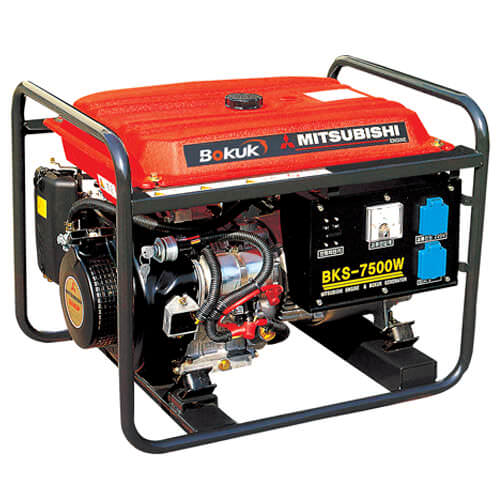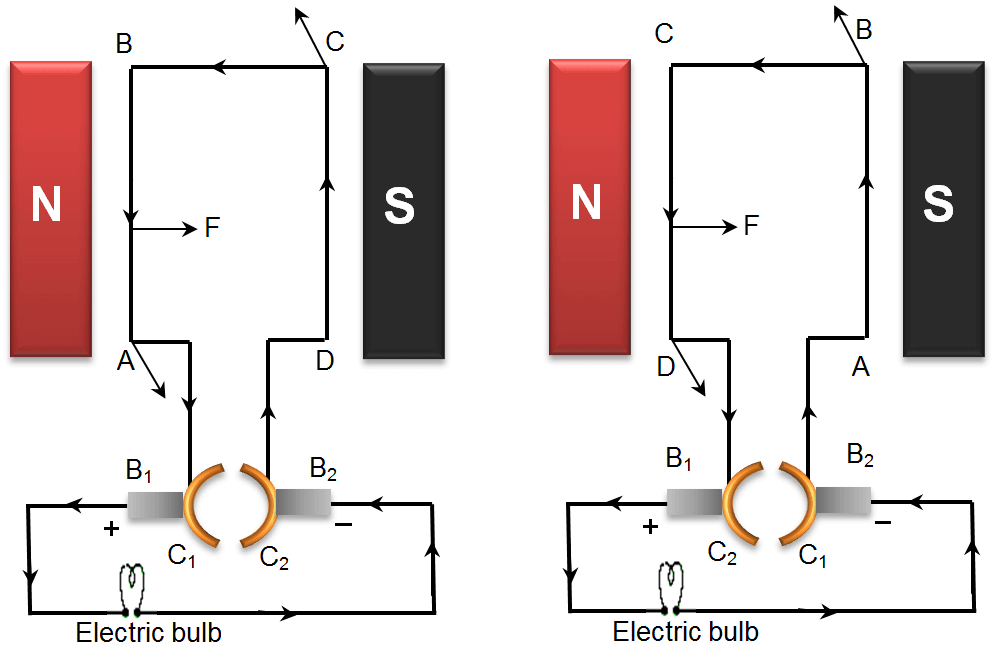An electric generator is a device that converts mechanical energy into electrical energy. Principle of Electric Generator
Principle of Electric Generator
An electric generator works on the principle that when a conductor placed in a magnetic field is moved then induced current is produced in the conductor in the direction given by Fleming’s right hand rule.
Construction of Electric Generator
An electric generator consists of following important parts:
1. Armature
Armature is a rectangular coil ABCD of insulated copper wire which is wrapped around a soft iron core and placed between the two poles of a U shaped permanent magnet.
2. Commutators
Commutators are two half rings made up of copper which links the brushes to the coil. In the diagram, commutator rings are represented as C1 and C2.
3. Carbon brushes
Electric generator consists of two carbon brush B1 and B2 which are pressed lightly against the C1 and C2 rings of the commutator respectively. The function of carbon brushes is to supply the current produced in the coil to various electrical appliances.
Working of Electric Generator
Let the coil ABCD be initially in horizontal position. Let the coil be rotated in anticlockwise direction between the poles of a horse shoe magnet so that the side AB of coil move down and side CD move up. When the coil ABCD is rotated, side AB of the coil cuts the magnetic field near the N pole of the magnet and side CD cuts the magnetic field near the S pole of the magnet. This results in production of electric current in the coil. By applying Fleming’s right hand rule, we find that the direction of current in side AB of coil is from point B to A and in side CD is from point D to C.

After half rotation, sides AB and CD interchange their positions so that AB go to right and CD go to left. Now, side AB starts to move up and CD moves down. So the direction of induced current produced in each side gets reversed after half revolution. Also the split rings C1 and C2 of commutator interchange their contacts with carbon brushes. Due to this, the direction of current in outer circuit remains same.
If the turning coil of an electric generator has a commutator then the connection will be reversed each half turn, so the current produced will always flow in the same direction. Such a current which always flow in the same direction is called direct current (D.C.). On the other hand, if the turning coil of an electric generator is without a commutator then the current produced will reverse the direction every half turn. Such a current which changes direction continuously with time is called alternating current (A.C.).
Test Your Understanding and Answer These Questions:
- What is an electric generator?
- Explain the principle of an electric generator?
- Explain the construction of an electric generator?
- Explain the working of an electric generator?
- Define alternate current.
- Define direct current.
- What is the difference between an electric generator and electric motor?
- Give differences between alternate current and direct current.
